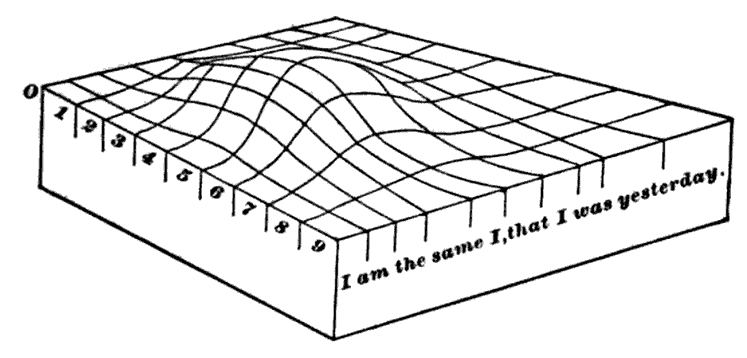
A low-tech model of human cognition, from William James’ The Principles of Psychology, 1890:
If we make a solid wooden frame with the sentence written on its front, and the time-scale on one of its sides, if we spread flatly a sheet of India rubber over its top, on which rectangular co-ordinates are painted, and slide a smooth ball under the rubber in the direction from 0 to ‘yesterday,’ the bulging of the membrane along this diagonal at successive moments will symbolize the changing of the thought’s content in a way plain enough, after what has been said, to call for no more explanation. Or to express it in cerebral terms, it will show the relative intensities, at successive moments, of the several nerve-processes to which the various parts of the thought-object correspond.
He was grappling with the stream of consciousness, the notion that thought is a flowing stream rather than a distinct chain of ideas, and with the realization that studying this by introspection is ultimately futile: “The rush of thought is so headlong that it almost always brings us up at the conclusion before we can arrest it. Or if our purpose is nimble enough and we do arrest it, it ceases forthwith to be itself. … The attempt at introspective analysis in these cases is in fact like seizing a spinning top to catch the motion, or trying to turn up the gas quickly enough to see how the darkness looks.”
